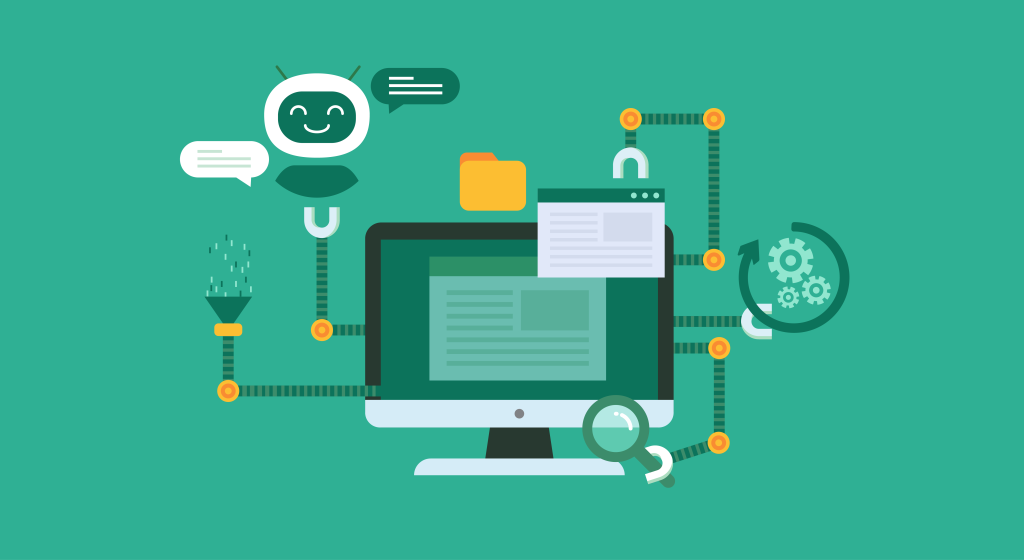As customer expectations soar and service volumes increase, businesses are increasingly turning to automating customer service with AI. But what exactly does this entail? And how can you effectively leverage AI to automate your customer service and provide exceptional experiences?
This comprehensive guide will explore everything you need to know about automating customer service with AI. We’ll delve into the benefits, the key technologies involved, practical implementation steps, and address common concerns to equip you with the knowledge to transform your customer service strategy.

Why Automate Customer Service with AI?
The shift towards customer service automation isn’t just a trend. It’s a strategic imperative for businesses aiming to thrive in a competitive landscape. Here are some compelling reasons why companies are embracing AI in customer service:
Reduced Costs and Global Reach
Enhanced Efficiency: AI-powered systems can handle a large volume of customer inquiries simultaneously, 24/7. This reduces the burden on human agents, allowing them to focus on complex issues, and significantly lowers operational costs associated with staffing and scaling customer service teams. According to Zendesk, leveraging AI agents can drastically improve efficiency in handling routine queries.
Improved Customer Experience (CX): Customers today expect instant responses and seamless service. AI chatbots and virtual assistants provide immediate support, answer frequently asked questions, and guide customers through self-service options. This instant availability drastically improves customer satisfaction and reduces wait times. As highlighted by industry reports, AI chatbots can handle initial customer chats, providing instant responses and improving the overall customer journey.
Proactive Support and Continuous Improvement
24/7 Availability: Unlike human agents who work limited hours, AI-driven customer service tools are always online, ensuring round-the-clock support across different time zones. This is crucial for businesses with a global customer base, guaranteeing consistent service regardless of location or time of day.
Agent Empowerment: AI in customer service isn’t about replacing human agents; it’s about augmenting their capabilities. AI tools can proactively guide agents by providing real-time information, suggesting solutions, and automating repetitive tasks. This empowers agents to be more efficient, knowledgeable, and deliver higher-quality service. Moreover, AI can analyze customer data to anticipate needs and offer proactive support, further enhancing the customer experience.
Data-Driven Insights: AI systems collect and analyze vast amounts of customer interaction data. This data provides valuable insights into customer behavior, pain points, and service areas that need improvement. By understanding these patterns, businesses can optimize their customer service processes, personalize interactions, and continuously enhance the overall customer experience.
Key AI Technologies Powering Customer Service Automation
Several AI-powered technologies are revolutionizing customer service. Understanding these tools is essential to effectively automate your customer service operations:
AI Chatbots and Virtual Agents
AI chatbots are perhaps the most visible application of AI in customer service. These intelligent programs can engage in conversations with customers through text or voice, answering questions, resolving simple issues, and guiding them through various processes. Advanced virtual agents powered by Natural Language Processing (NLP) can understand complex queries, personalize interactions, and even handle emotional nuances, making interactions feel more human-like.
Use Cases: Answering FAQs, providing order status updates, scheduling appointments, guiding website navigation, initial troubleshooting, lead generation.
AI-Powered Ticketing Systems
Managing customer support tickets efficiently is crucial for any business. AI can automate ticket routing and prioritization, ensuring that inquiries are directed to the right agents or departments quickly and accurately. This eliminates manual triage, reduces resolution times, and improves overall ticket management efficiency. Automating ticket triaging with AI is a significant step towards streamlining customer service workflows.
Use Cases: Automated ticket categorization, priority assignment, intelligent routing to relevant departments, detecting and flagging urgent issues, identifying and merging duplicate tickets.
AI Knowledge Bases and Self-Service Portals
Empowering customers to find answers themselves is a key component of efficient customer service. AI-powered knowledge bases utilize intelligent search and natural language understanding to help customers quickly find relevant information from FAQs, articles, and documentation. These systems can also learn from user interactions to improve search accuracy and content relevance over time.
Use Cases: Intelligent search within FAQs and help articles, personalized content recommendations, automated content updates based on user feedback, virtual assistants integrated into knowledge bases for guided self-service.
AI-Driven Agent Assist Tools
AI can proactively guide agents during customer interactions by providing real-time support and information. Agent assist tools can analyze conversations, identify customer sentiment, suggest relevant knowledge base articles, and even automate repetitive tasks like form filling or sending follow-up emails. This empowers agents to be more efficient, knowledgeable, and deliver consistent, high-quality service.
Use Cases: Real-time knowledge base suggestions, sentiment analysis, automated response templates, workflow automation for agents, call summarization and transcription.

Implementing AI in Your Customer Service Strategy: A Step-by-Step Guide
Successfully automating customer service with AI requires careful planning and execution. Here’s a step-by-step guide to help you get started:
Automation Opportunities
Identify Pain Points: Analyze your current customer service processes to pinpoint areas where automation can have the biggest impact. Common pain points include high ticket volumes for simple queries, long wait times, repetitive agent tasks, and inconsistent service quality.
Define Clear Goals and Metrics: What do you hope to achieve by automating customer service? Set specific, measurable, achievable, relevant, and time-bound (SMART) goals. Examples include reducing average handle time, improving customer satisfaction scores (CSAT), lowering support costs, or increasing self-service resolution rates.
Choose the Right AI Tools and Platforms: Select AI-powered customer service solutions that align with your specific needs and goals. Consider factors like your budget, technical infrastructure, integration capabilities, and the complexity of your customer interactions. Explore different vendors and platforms offering AI chatbots, ticketing systems, knowledge bases, and agent assist tools.
Automating Customer Service
Start Small and Iterate: Begin with a pilot project in a specific area of customer service before rolling out AI automation across the entire organization. For example, you could start by implementing an AI chatbot to handle FAQs on your website. Monitor performance, gather feedback, and iterate based on results.
Integrate AI with Human Agents: Remember that AI in customer service is not about replacing human agents entirely. Focus on creating a hybrid model where AI handles routine tasks and frees up agents to focus on complex, nuanced, and emotionally sensitive interactions. Ensure seamless handover between AI and human agents when necessary.
Train and Monitor Your AI Systems: AI systems require training and ongoing monitoring to perform effectively. Provide your chatbots and virtual agents with relevant data and continuously refine their knowledge base. Regularly analyze performance metrics, identify areas for improvement, and make necessary adjustments to your AI automation strategy.
Focus on Customer Experience: Ultimately, the goal of automating customer service is to improve the customer experience. Ensure that your AI interactions are helpful, efficient, and user-friendly. Continuously seek customer feedback and optimize your AI systems to meet their evolving needs and expectations.
Addressing Common Concerns about AI in Customer Service
While the benefits of AI in customer service are significant, some businesses have legitimate concerns. Addressing these concerns is crucial for successful adoption:
Lack of Human Touch: Some worry that AI interactions will feel impersonal and robotic. However, advancements in NLP and sentiment analysis are enabling AI to understand and respond to emotions more effectively. The key is to design AI interactions that are helpful, empathetic, and seamlessly integrated with human agents when needed.
Data Privacy and Security: Handling customer data responsibly is paramount. Choose AI customer service platforms that prioritize data privacy and security, comply with relevant regulations (like GDPR or CCPA), and implement robust security measures to protect sensitive information.
Initial Investment and Implementation Complexity: Implementing AI in customer service can require an initial investment and may seem complex. However, many solutions offer flexible pricing models and user-friendly interfaces. Starting with a pilot project and choosing scalable solutions can help manage costs and complexity.
Job Displacement Concerns: There are concerns that AI automation will lead to job displacement in customer service. However, the reality is that AI is more likely to augment human roles rather than replace them entirely. By automating routine tasks, AI can free up agents to focus on higher-value activities, requiring new skills and creating new opportunities in customer service.

The Future of Customer Service is Intelligent Automation
Automating customer service with AI is no longer a futuristic concept. It’s a present-day reality transforming how businesses interact with their customers. As AI technology continues to evolve, we can expect even more sophisticated and personalized customer service experiences powered by intelligent automation.
By embracing AI in customer service, businesses can unlock significant benefits: improved efficiency, reduced costs, enhanced customer satisfaction, and a competitive edge in the market. Understanding everything you need to know about automating customer service with AI is the first step towards transforming your customer service strategy and building stronger, more loyal customer relationships.
You can also read:
How to Add a DeepSeek Chatbot to Your Website in Three Steps



